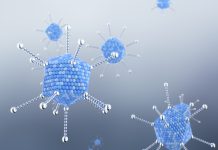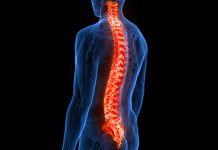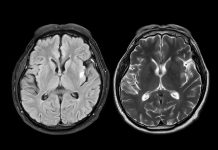Cecilia Van Cauwenberghe from Frost & Sullivan’s TechCasting Group, places the spotlight on osteogenesis imperfecta – toward future targeted, more effective therapy – starting with background on the main symptoms and incidence
In a comprehensive study carried out at the IWK Health Center (Subramanian and Viswanathan, 2019), the aetiology of osteogenesis imperfecta (OI) has been illustrated, along with potential treatment and management options for each type from an interprofessional team perspective, which would contribute to improving healthcare coordination and general outcomes in patients with OI. According to the authors, OI is a rare genetic disorder of connective tissues directly associated with type I collagen synthesis or control abnormality.
As well-known as brittle bone disease, OI involves an increased susceptibility to bone fractures and reduced bone density and other characteristics such as blue sclerae, dentinogenesis imperfecta, short stature, generalised laxity, easy bruising, hernias and excess sweating. Sometimes in adulthood, OI leads to deafness, valvular insufficiencies and aortic root dilation.
Researchers at the Department of Molecular and Human Genetics, Baylor College of Medicine, Houston, Texas, U.S. (Marom et al., 2020) have also investigated OI’s inheritance and clinical aspects, including types of OI, modes of inheritance, and effects on osteoblast function. The investigators estimated the incidence of OI from about 1 in 10,000 to 1 in 20,000). According to the researchers, the alterations in the osteoblast function provide a strong systemic nature to this disease, which leads to the onset of a variety of additional symptoms and complications for patients affected with OI. Furthermore, this characteristic demands a multidisciplinary team of physicians to provide adequate treatment.
Current status of diagnosis and treatment
An in-depth understanding of the molecular bases of OI
A team of scientists from the Bone and Mineral Unit, Division of Endocrinology, Universidade Federal de São Paulo, Brazil, working in close collaboration with the Academic Unit of Bone Metabolism, University of Sheffield, UK (Palomo et al., 2017), have focused on the diagnosis of OI. According to the researchers, although mutations in the two genes coding for collagen type I, COL1A1 and COL1A2, are the most common cause of OI, during the past ten years, defects in at least 17 other genes have been identified as responsible for OI phenotypes, with either dominant or recessive transmission. In their publication, the investigators discuss newly discovered OI genes, while revising primary management approaches to OI in children and adults. The authors emphasise that although bisphosphonate treatment decreases long-bone fracture rates, this fact does not reduce the incidence and frequency of fractures. Therefore, they suggest the study of new antiresorptive and anabolic agents.
Bisphosphonates act by inhibiting osteoclast activity and bone resorption. While improving bone mineral density in patients with OI, fracture incidence is not significantly reduced. They constitute the primary option in children because of the beneficial effect on reshaping vertebrae with compression fracture deformities, improvement in bone mass, and growing architecture. Nevertheless, in adult patients, some side effects of hypocalcemia, such as osteoporosis and overall loss of bone density, make bisphosphonates suboptimal.
New therapy landscape for more effective targeted therapies
Cell and gene therapies to explore
A conjunct work between the Centre for Genetics and Experimental Medicine, MRC Institute of Genetics and Molecular Medicine, Western General Hospital, University of Edinburgh, UK, and the Royal Hospital for Sick Children, Edinburgh, UK (Ralston and Gaston, 2020), also highlights the critical advances in establishing a solid molecular-based foundation of OI. According to the authors, this progress has not been accompanied by the same level of advancement in the development of more effective targeted therapies.
The researchers also analyse the potential utilisation of cell and gene therapies as treatments for severe OI. Among them, gene-based approaches that could be explored in severe OI, but which have not yet been attempted are to try and correct the genetic defect in stem cells or mesenchymal cells using CRISPR-Cas9 (clustered regularly interspaced short palindromic repeats-associated protein 9) technology or Antisense RNA or oligonucleotides to suppress the expression of damaging mutant transcripts, are the most attractive for the researchers.
Acknowledgements
I want to thank all contributors from the industry involved with developing and delivering this article from Frost & Sullivan.
Further Reading
- Marom, R., Rabenhorst, B.M. and Morello, R., 2020. Osteogenesis imperfecta: an update on clinical features and therapies. European Journal of Endocrinology, 183 (4), pp.R95-106.
- Palomo, T., Vilaça, T. and Lazaretti-Castro, M., 2017. Osteogenesis imperfecta: diagnosis and treatment. Current Opinion in Endocrinology & Diabetes and Obesity, 24 (6), pp.381-388.
- Ralston, S.H. and Gaston, M.S., 2020. Management of osteogenesis imperfecta. Frontiers in endocrinology, 10, p.924.
- Subramanian, S. and Viswanathan, V.K., 2019. Osteogenesis Imperfecta.








